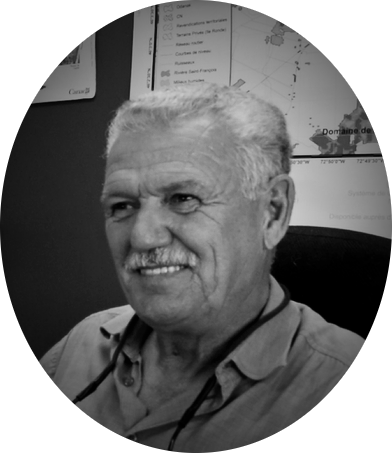Continue à explorer ici
Territoire ~ Pratique traditionnelle
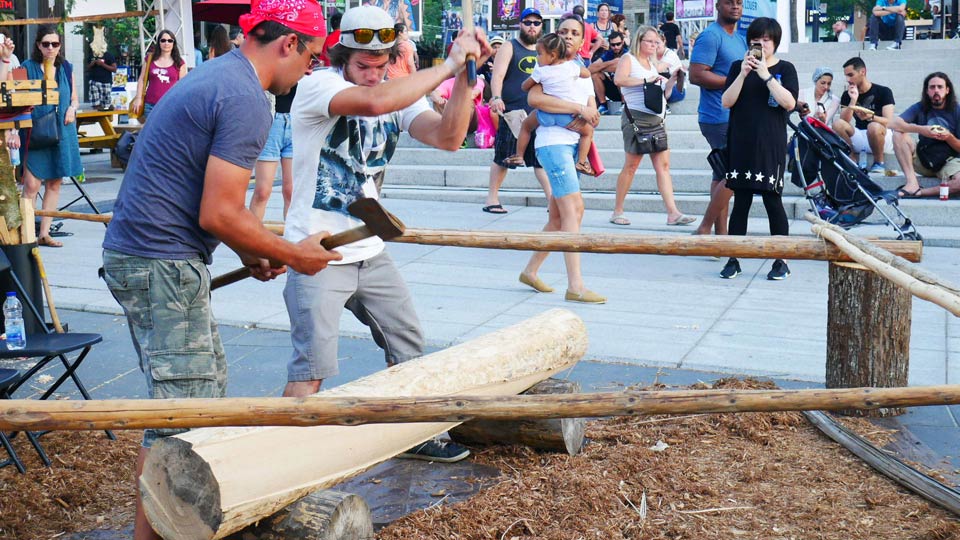 English
English
Luc Gauthier Nolett et Kenny Panadis battant le frêne noir au festival Présence Autochtone à Montréal, été 2016
Le frêne noir: un arbre sacré pour les Wabanaki
«Selon la légende, les Wabanakiak on est nés du frêne. C’est notre arbre sacré, surtout le frêne noir. Il y en a trois sortes, le rouge, le noir et le blanc. Le noir c’est celui qu’on prend pour battre, pour faire de la vannerie fine. Pour nous autres, c’est un arbre sacré.» Michel Durand Nolett
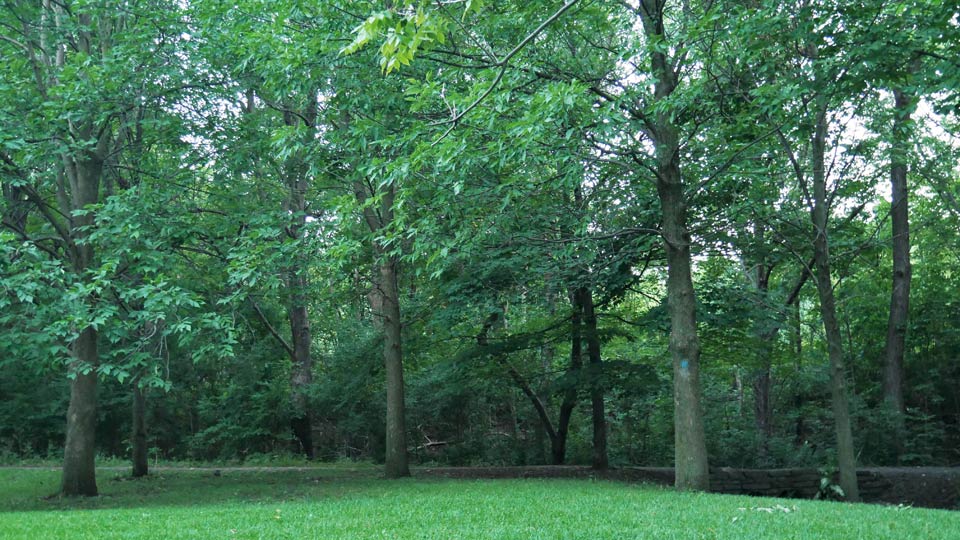
Frênes dans le parc du Mont-Royal, Montréal.
Nés du frêne: histoire originelle des Abénakis
Various versions of the story exist. According to most tales, Gluskabe or Glooskap is not a god, but a cultural hero, a trickster who had supernatural powers and used them to manipulate the world, making it more habitable for humans. The video below tells the creation story in Western Abenaki language. It was made for the graphic novel Dawn Land. It is not directly part of Circle of Voices but it is displayed here because it constitutes insightful audio-visual material.
Battre et fendre le frêne
Luc: «We use the ash for handicrafts, for us nowadays. I am one of the last who takes care of the transmission of this little part of the culture that we still know, that we like to pass on. Yes, I’m responsible for that, so I’m in charge of going to get the wood, identifying it, cutting it down, and coming back here to deal with the pounding, and the passing on of this knowledge.» Kenny: «It’s really an art to pound the ash. You really have to…If you’re not calm, you won’t be able to pound. You really have to be calm, otherwise it won’t work. You have to learn with the other person. When you are able to pound, when you can listen to the sound because if it does ‘tactac’ it doesn’t work. It has to be like ‘tac tac tac tac tac’. For sure it can be dangerous, some people find it dangerous. But once you’re used to it, you know it, as soon as you hear a ‘tactac’ you take your axe away.»
Le défi de conserver la pratique traditionnelle vivante dans la communauté
«J’étais au Conseil de bande, on discutait de frêne noir avec Clément M’Sadoques. On s'est rendu compte qu’on était les deux seuls dans la communauté qui connaissaient le frêne noir. C'est Luc qui a été le premier, pour lui montrer comment tu choisis ton frêne noir, comment tu l’identifies premièrement en forêt? Au début du XXème siècle, jusque dans les années 50, beaucoup, beaucoup d’agriculteurs ici alentours, ont rasé la forêt de frêne noir pour pas qu'ici les gens d’Odanak en aient. Parce-que les gens d’Odanak faisaient de la vannerie fine. Ma grand-mère, mon arrière grand-mère faisaient de la vannerie pendant l’hiver et rendu au printemps, partaient avec le train et se rendaient à Ogunquit et York Beach. Elles partaient aux Etats-Unis, elles s’achetaient des robes, des affaires. Elles étaient très avant-gardistes par rapport aux femmes aux alentours ici. Il s’est créé une certain jalousie que: "les sauvagesses étaient mieux habillées que nous autres".»
Michel a déjà collaboraté sur un projet about black ash basketry. The video below is extracted from there and was realized by La Boite Rouge Vif.
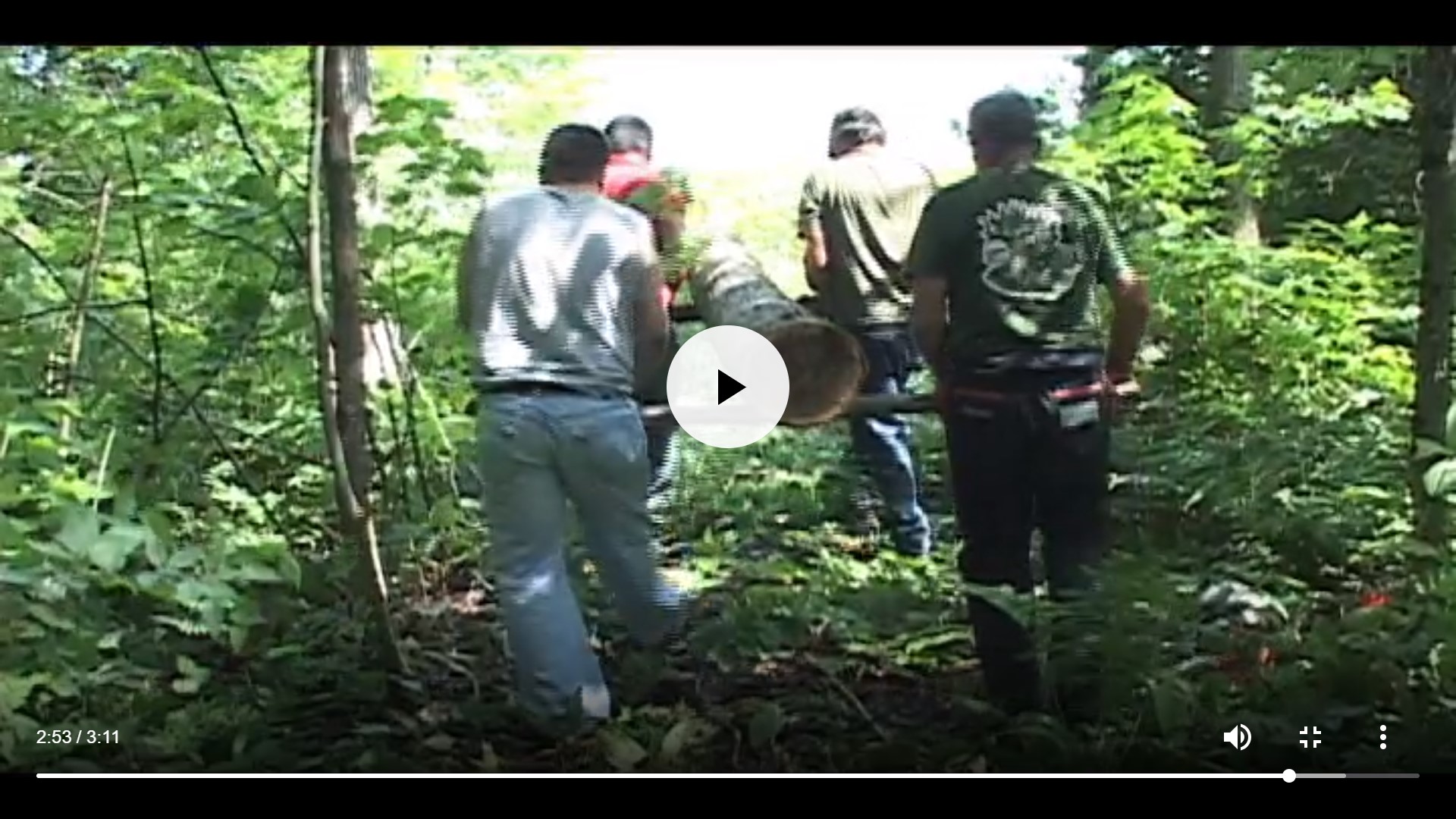
Qu'est ce qui se passe ensuite? Par ici si la curiosité vous pique d'en apprendre plus sur la vannerie Abénakise!
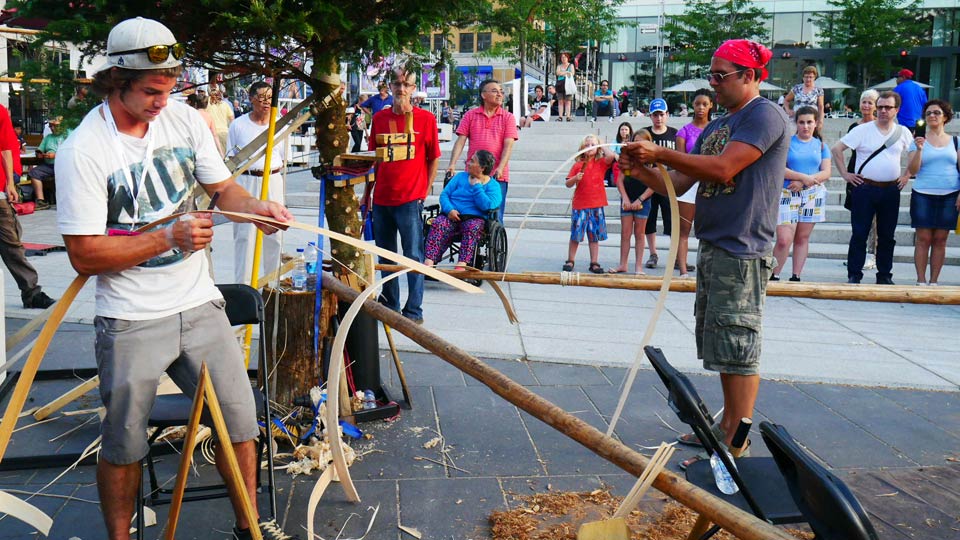
Luc Gauthier Nolett et Kenny Panadis fendant le frêne noir au festival Présence Autochtone à Montréal, été 2016
